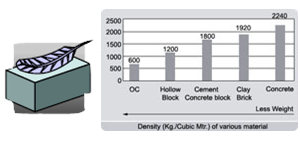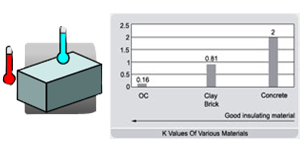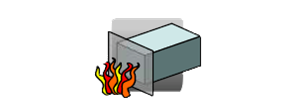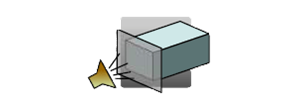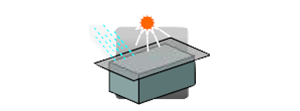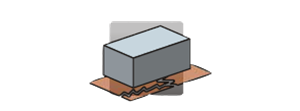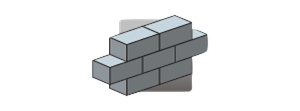

Aerocon blocks also known as Autoclaved Cellular Concrete (ACC) or Autoclaved Lightweight Concrete (ALC). It is a lightweight, precast building material that simultaneously provides structure, insulation, and fire and mold resistance. It’s a unique and excellent type of building materials due to its super heat, fire and sound resistance, It is lightweight and offers ultimate workability, flexibility and durability.
AAC has excellent thermal insulation and acoustic absorption properties. AAC is fire and pest resistant, and is economically and environmentally superior to the more traditional structural building materials such as concrete, wood, brick and stone.
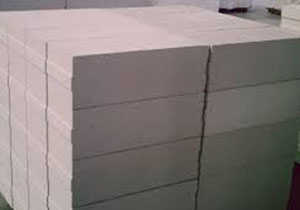
| Thickness | Height | Length | Density | Compressive Strength | Dry Weight/Block |
|---|---|---|---|---|---|
| 100 mm | 200 mm | 600 mm | 550-700 kg/m3 | 30-50 kg cm2 | 7 kg |
| 150 mm | 200 mm | 600 mm | 550-700 kg/m3 | 30-50 kg cm2 | 10.5 kg |
| 200 mm | 200 mm | 600 mm | 550-700 kg/m3 | 30-50 kg cm2 | 14.5 kg |
An excellent substitute for clay bricks, concrete and hollow blocks
AAC block product has many advantages such as lighter quality, better heat preservation property and better sound absorption or insulation effect in comparison with common brick. What's more, it has certain strength, compression degree and machinability. All these are functions common brick doesn't have. Thus, as construction material and heat preservation material, AAC brick is widely applied in construction field and is paid more and more attention to by countries all over the world. It is widely promoted and developed by many countries and has become their foremost construction material selection. AAC takes silicon material and calcium material as the main raw material. Adding foaming agent and stirring with water, it produces pore seam after chemical reaction. After poring molding, pre-storage cutting and autoclaved maintenance technological process, it finally develops into multi-pore silicate concrete. With AAC equipment being more and more widely applied in construction field, we can see its image in most buildings, especially in high-rise building. By following, let's come to introduce AAC block advantages on its application in high-rise building.
Autoclaved Aerated Concrete (AAC) is a certified green building material, which can be used for commercial, industrial and residential construction. It is porous, non-toxic, reusable, renewable and recyclable.
| No. | Parameter | AAC Block | Brick |
|---|---|---|---|
| 1 | Size (L x H x B) | 60cm x 20cm x 10 - 30 cm | 23cm x 7.5cm x 11.5cm |
| 2 | Precision in size | Variation 1.5 mm (+ /-) | Variation 5mm(+/-) |
| 3 | Compressive Strength | 35-40 Kg/cm2 (As per IS.:21851) | 25-30 Kg/cm2 |
| 4 | Dry Density | 550-650 kg/m3 (Oven dry) | 1950 Kg/m3 |
| 5 | Wet Density | App. 800 Kg./m3 | App. 2400 Kg./m3 |
| 6 | Fire Resistance | 2 to 6 Hour depending on thickness | 2 Hours |
| 7 | Sound Reduction Index (dB) | 45 for 200 mm thick wall | 50 for 230 mm thick wall |
| 8 | Thermal Conductivity. (Kw-m/C) | 0.16 | 0.81 |
| 9 | Adaption to various surface finishes | All kind of Finish like in brick work is possible | Same |
| 10 | Mortar Consumption per M3with 1:6 | 0.5 bag of Cement | 1.35 bag of Cement |
| 11 | Construction Time per mason per | 30 Sqm. with block only. More can be constructed if total system is used i.e. 50% time saving | 20 sqm. with Conventional Brick |
| 12 | Chemical Composition | Fly ash used app. 60 % which reacts with binders (Lime & Cement) to form AAC which is an inert material | Soil is used which contains many inorganic Impurities like sulfates etc. which results in Efflorescence |
| 13 | Finishing | Can be directly incised, rasped to round edge, cut for arches, tapered to create profiles, sculptured etc. | Not Possible |
| 14 | Contribution to carpet area | 3 - 5 % | No saving |
| 15 | Cost benefit Factor | Depending upon project design, savings upto 20% in structural cost due to reduction of dead load | No saving |
| 16 | Energy saving | Upto 30 % of Airconditioning Load. Both heating and cooling load will come down | No saving |
